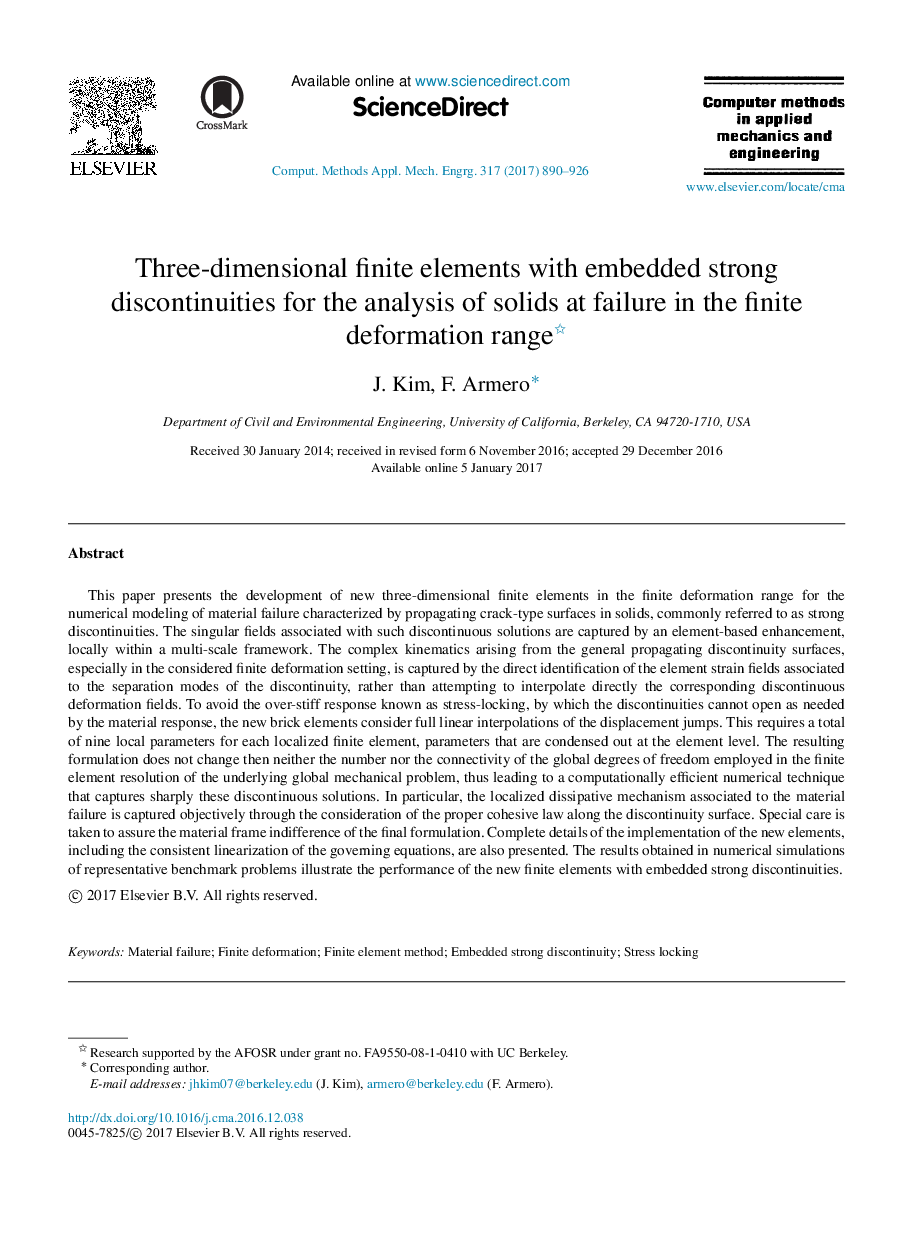| Article ID | Journal | Published Year | Pages | File Type |
|---|---|---|---|---|
| 4964132 | Computer Methods in Applied Mechanics and Engineering | 2017 | 37 Pages |
Abstract
This paper presents the development of new three-dimensional finite elements in the finite deformation range for the numerical modeling of material failure characterized by propagating crack-type surfaces in solids, commonly referred to as strong discontinuities. The singular fields associated with such discontinuous solutions are captured by an element-based enhancement, locally within a multi-scale framework. The complex kinematics arising from the general propagating discontinuity surfaces, especially in the considered finite deformation setting, is captured by the direct identification of the element strain fields associated to the separation modes of the discontinuity, rather than attempting to interpolate directly the corresponding discontinuous deformation fields. To avoid the over-stiff response known as stress-locking, by which the discontinuities cannot open as needed by the material response, the new brick elements consider full linear interpolations of the displacement jumps. This requires a total of nine local parameters for each localized finite element, parameters that are condensed out at the element level. The resulting formulation does not change then neither the number nor the connectivity of the global degrees of freedom employed in the finite element resolution of the underlying global mechanical problem, thus leading to a computationally efficient numerical technique that captures sharply these discontinuous solutions. In particular, the localized dissipative mechanism associated to the material failure is captured objectively through the consideration of the proper cohesive law along the discontinuity surface. Special care is taken to assure the material frame indifference of the final formulation. Complete details of the implementation of the new elements, including the consistent linearization of the governing equations, are also presented. The results obtained in numerical simulations of representative benchmark problems illustrate the performance of the new finite elements with embedded strong discontinuities.
Related Topics
Physical Sciences and Engineering
Computer Science
Computer Science Applications
Authors
J. Kim, F. Armero,
